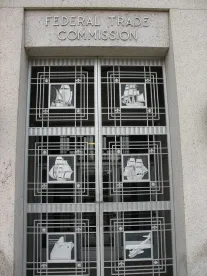District Court refuses to grant renewed motion to dismiss based on Noerr-Pennington doctrine. In re AndroGel Antitrust Litigation (No. II), MDL No. 2084 (re Federal Trade Commission v. Actavis, Inc., No. 1:09-CV-955-TWT) (N.D. GA April 21, 2014).
In April 1999, Solvay Pharmaceuticals, LLC (“Solvay”) filed a New Drug Application (“NDA”) with the Food and Drug Administration (“FDA”) seeking approval to commercially market a testosterone replacement gel (“AndroGel”). The gel had been developed from a pharmaceutical formula by Besins Healthcare, S.A. (“Besins”). Solvay and Besins thereafter filed a patent application with the U.S. Patent and Trademark Office (“PTO”). A patent was subsequently issued.
Before its issuance, other companies developed generic versions of AndroGel. After one generic was developed, an Abbreviated New Drug Application (“ANDA”) was filed. Thereafter, the patentees agreed to share potential patent litigation costs, and to sell the generic AndroGel. They also agreed to share profits. See In re AndroGel Antitrust Litigation (No. II), 687 F. Supp. 2d 1371, 1374 (N.D. Ga. 2010). The generic producers notified the patentees of the ANDA’s and asserted that their patent was invalid or would not be infringed by their generic. The patentees responded to the ANDA notice by filing an action for infringement.
Before the ANDA issues were resolved, the action were settled. As part of the settlement, Solvay agreed to a consent judgment dismissing its infringement action. However, it also agreed to share profits for AndroGel sales with the settling defendants. The payment structure was not disclosed to the court, and was not included in the consent judgment.
The settlement prompted an investigation by the Federal Trade Commission (“FTC”). The FTC and a number of private parties filed actions. The actions were consolidated before the District Court for the Northern District of Georgia. On motions to dismiss, the court concluded, in part that, pursuant to Eleventh Circuit law, the settlement agreement would pass antitrust scrutiny unless the underlying litigation itself was a “sham”. The Eleventh Circuit affirmed, on the ground that the settlement did not exceed the scope of the underlying patent.
In FTC v. Actavis, Inc., 570 U.S. ____, 133 S. Ct. 2233 (June 17, 2013) the Supreme Court reversed. It held, inter alia, that the “near-automatic antitrust immunity” for reverse payment patent settlements should be replaced by a full “rule of reason” antitrust analysis. 133 S. Ct. at 2237. It held that the likelihood of a reverse payment bringing about anticompetitive effects was a function of market dynamics, including size, scale of the payments in relation to the anticipated future litigation costs, and the lack of any other convincing business justifications.
Thus, reverse payment “pay for delay” patent settlements are not categorically immune from the antitrust laws, even when within the scope of the patent. Accordingly, a full rule of reason analysis is warranted. “Pay for delay” infringement settlements are neither presumptively lawful, nor presumptively unlawful. They are a function of competitive dynamics within the industry involved. The case was thus reversed and remanded.
Upon remand to the Georgia District Court, the parties again moved to dismiss the action. This time, they invoked the Noerr-Pennington doctrine, arguing that the case should be dismissed because the consent order issued by the court as part of the settlement approval process triggered “petitioning conduct” immunity under the Noerr-Pennington doctrine. In Eastern R.R. Presidents Conference v. Noerr Motor Freight, Inc., 365 U.S. 127 (1961) the Supreme Court immunized joint efforts by a group of railroads to obtain legislation and/or executive action unfavorable to competing trucking firms. The Court held that conduct directed towards inducing governmental action was First Amendment “petitioning” conduct and thus immune from further antitrust scrutiny. The Noerr Court emphasized that condemning the railroads’ lobbying campaign “would impute the Sherman Act a purpose to regulate … political activity, a purpose which would have no basis whatever in the legislative history of the [Sherman] Act.” In dicta, however, the Noerr Court cautioned that immunity might be withheld when seeming petitioning activity “ostensibly directed towards influencing governmental action, is a mere sham to cover … an attempt to interfere directly with the business relations of a competitor.” In United Mine Workers v. Pennington, 381 U.S. 657 (1965), the Court extended the principle of Noerr to efforts to influence administrative action by governmental agencies.
However, in California Motor Transport Co. v. Trucking Unlimited, 404 U.S. 508 (1972), and in a series of subsequent cases, the court began to qualify and limit the definition of “petitioning conduct”. In Trucking Unlimited, the Court ruled that the First Amendment does not protect “sham” conduct and suggested that the Sherman Act reaches misrepresentation or other unethical conduct more readily when used to subvert adjudicative processes. The Court recognized that the boundary between legitimate petitioning conduct and sham behavior might prove to be “a difficult line to discern and draw.”
In a well-publicized and discussed case in the Noerr line of authority, the Court in Professional Real Estate Investors, Inc. v. Columbia Pictures Indus., Inc., 508 U.S. 49 (1993), clarified, to some degree, what it considered “sham conduct”. The Court held that to constitute “sham” conduct, the allegedly “sham” litigation must be “objectively baseless”.
Needless to say, a good argument can be made that the Noerr line of cases is consistent withActavis in suggesting the use of a full-blown rule of reason analysis in to separate the wheat from the chaff and illuminate the “difficult line to discern and draw.”
Before the Georgia District Court on remand, the defendants argued that the FTC’s complaint should be dismissed as a matter of law because the settlement and approval process was legitimate petitioning for governmental action, and thus protected by the Noerr-Penningtondoctrine. However, the District Court noted that the “reverse payments” aspects of the settlement agreements were not presented to the court, and were not embodied in the consent order. The District Court found In re Nexium (Esomeprazole) Antitrust Litigation, No. 12-md-02409-WGY, 2013 WL 4832176 (D. Mass., September 11, 2013) to be persuasive, and to provide the authority for denial of the motion to dismiss. In particular, the court quoted the following passages from In re Nexium:
Courts are largely uniform in their view that private litigation agreements entered into during the pendency of litigation that are neither presented to nor approved by the judge presiding over the dispute fall outside the ambit of Noerr-Pennington immunity.
A decision of the court that serves merely to memorialize a bargained-for agreement that could have been resolved without judicial intervention ought not benefit from the exemption allowed in Noerr-Pennington … Adopting the alternative view would provide litigants with an avenue wholly impervious to antitrust scrutiny simply by seeking out a court “rubber-stamped approval.”
Thus, the District Court concluded that the consent order before it, like the judgment in Nexium,was not immune from antitrust scrutiny on the basis of Noerr-Pennington.
The court held that the Supreme Court’s Noerr-Pennington precedents, read in conjunction with the Supreme Court’s recent decision in Actavis, counseled against immunizing the reverse payment agreement before it. The court did not discuss the fact that the Noerr-Pennington First Amendment argument was not raised before it, the Eleventh Circuit, or the Supreme Court inActavis. It is not clear whether an argument on waiver was considered by the court. Suffice it to say, however, that the Actavis directive that reverse payment patent case settlements be subject to a broad rule of reason analysis would render the selective application of the Noerr-Penningtonargument raised to be superfluous, at best. In fact, the court noted that such a rule would largely eviscerate Actavis.
One may posit the question, however, whether the Actavis “full-blown rule of reason” approach is either workable or desirable as a methodology for providing some minimum guidance for parties wishing to settle pending litigation. One should not be surprised to expect a trend towards a structured rule of reason approach, such as may be evolving in the demise of Dr. Miles by Leegin Creative Leather. A truncated approach might be to measure the amount of the reverse payment against the estimated “full-blown” anticipated costs of continuing litigation. And, to paraphrase Professor Calkins in his article on the Supreme Court decision in California Dental Association, the future disposition, or at least the trend of the law, may be for “not a quick look but not the full Monty”. See Stephen Calkins, 67 Antitrust L.J. 495 (2010).



 />i
/>i

